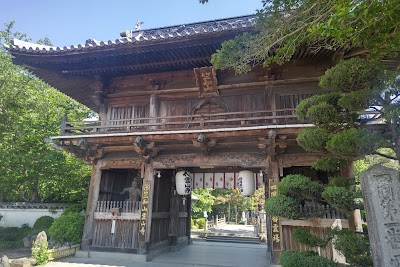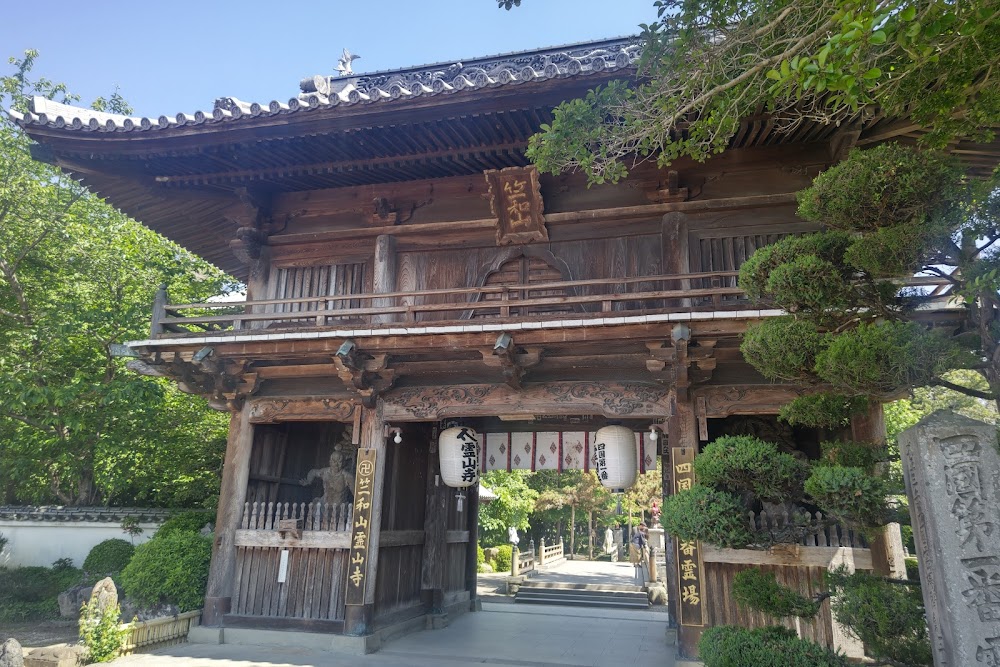Ryozenji Temple (霊山寺)
Overview
Ryozenji Temple, nestled in the picturesque Naruto City of Tokushima Prefecture, Japan, is a landmark steeped in spirituality and historical significance. As the first of the 88 temples in the renowned Shikoku Pilgrimage, Ryozenji holds a special place in the hearts of both pilgrims and tourists. This temple serves as a starting point for many who embark on the pilgrimage, making it a site rich with anticipation, blessings, and cultural heritage.
The origins of Ryozenji Temple trace back to the early 8th century during the Nara period, founded by the esteemed Buddhist monk Gyoki. The temple was later restored and elevated by the revered monk Kobo Daishi, also known as Kukai, in the early 9th century. Kobo Daishi, the founder of the Shingon sect of Buddhism, is a monumental figure in Japanese religious history, and his connection to Ryozenji amplifies its spiritual resonance.
Upon entering the temple grounds, visitors are welcomed by a serene atmosphere and traditional Japanese architecture. The Nio-mon Gate, both imposing and intricately designed, serves as the main entrance and is adorned with fierce Nio guardian statues meant to ward off evil spirits. The main hall, or Hondo, showcases exceptional craftsmanship and offers a tranquil space for prayer and reflection. Additionally, the Daishi-do Hall, dedicated to Kobo Daishi, serves as a focal point where pilgrims seek blessings for their journey.
The natural beauty surrounding Ryozenji is captivating. The meticulously maintained temple grounds feature seasonal gardens that burst with color from plum blossoms in spring to vibrant autumn foliage. The tranquil atmosphere is enhanced by the gentle sounds of nearby streams and rustling leaves, creating an idyllic setting for meditation and relaxation.
A notable experience at Ryozenji is the opportunity to witness and participate in traditional Buddhist rituals. Visitors can observe the osuji, or water ablution ritual, where pilgrims cleanse their hands and mouths as a form of purification before offering prayers. The sutra chanting sessions, often accompanied by the rhythmic beating of taiko drums, provide an immersive auditory journey into the heritage of Buddhist practice.
Within the temple complex lies the treasure hall, or Homotsukan, which houses an impressive collection of religious artifacts and relics. Here, visitors can discover ancient scrolls, statues, and various items associated with Kobo Daishi. These historical pieces offer a glimpse into the rich religious heritage and provide context to the temple's longstanding spiritual importance.
Ryozenji Temple is not just a spiritual haven; it also serves as a center for community and cultural events. Visitors can engage in various temple activities, including traditional tea ceremonies, calligraphy workshops, and seasonal festivals that celebrate local culture and the religious calendar. The temple grounds frequently host educational tours and programs that illuminate the history and traditions of Buddhism in Japan, making it a fascinating destination for those eager to learn.
For a holistic visit, tourists can explore the surrounding Naruto City, which boasts attractions such as the famous Naruto Whirlpools and the impressive Onaruto Bridge. The combination of natural splendor, cultural activities, and historical sites makes the area around Ryozenji a fulfilling destination for travelers.
In terms of accessibility, Ryozenji Temple is conveniently located and easily reachable from Tokushima Airport and Tokushima Station. Local transportation options, including buses and taxis, ensure a comfortable travel experience for tourists, making the pilgrimage route accessible to all.
In conclusion, Ryozenji Temple offers a rich blend of history, spirituality, and cultural immersion that is sure to enchant any visitor. Whether you are beginning the Shikoku Pilgrimage or simply delving into Japan’s religious heritage, Ryozenji stands as a profound testament to the country’s spiritual and cultural landscape. Visitors depart with not only valuable insights and cherished memories but also a deep sense of peace and connection to something greater.





